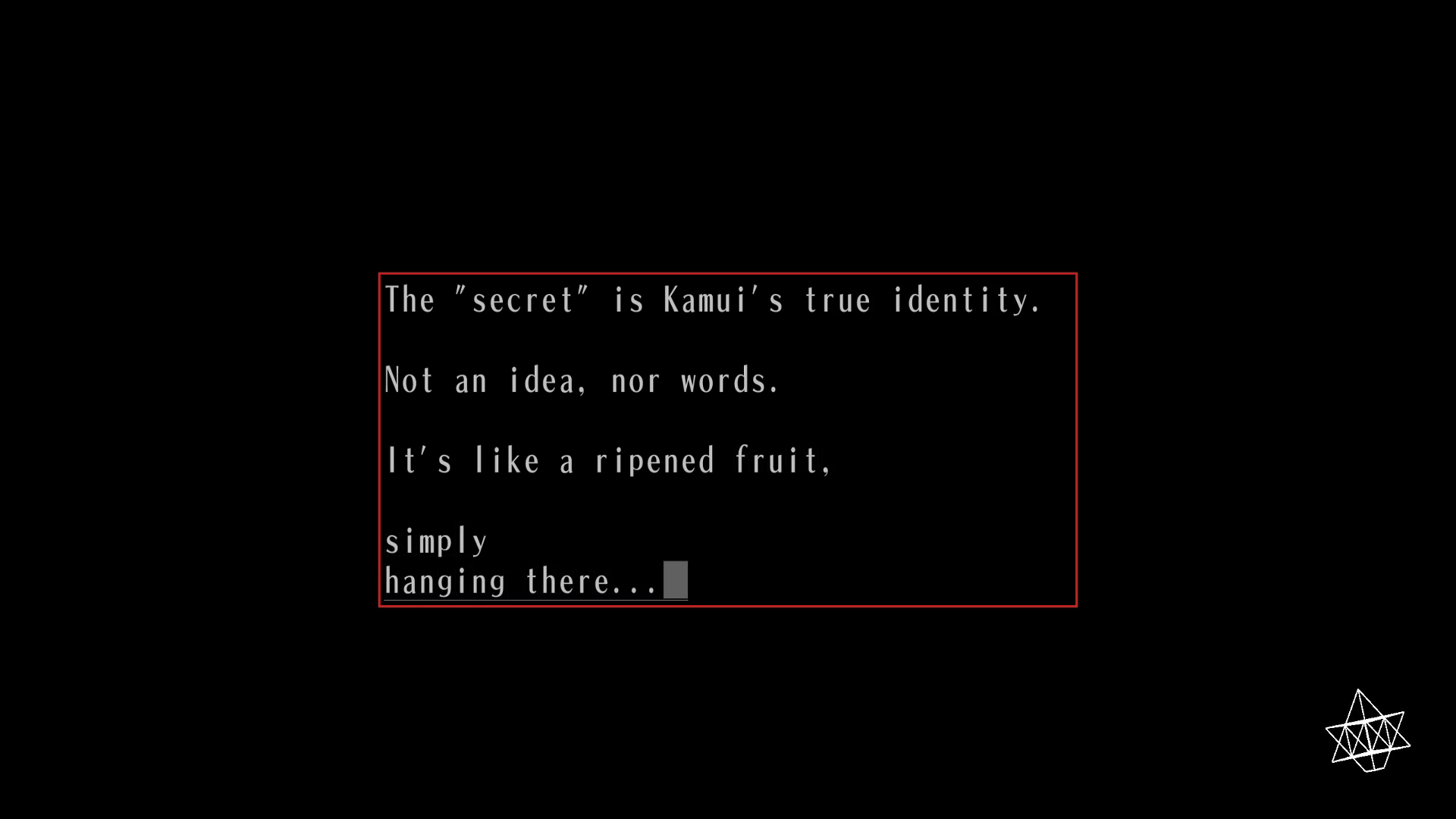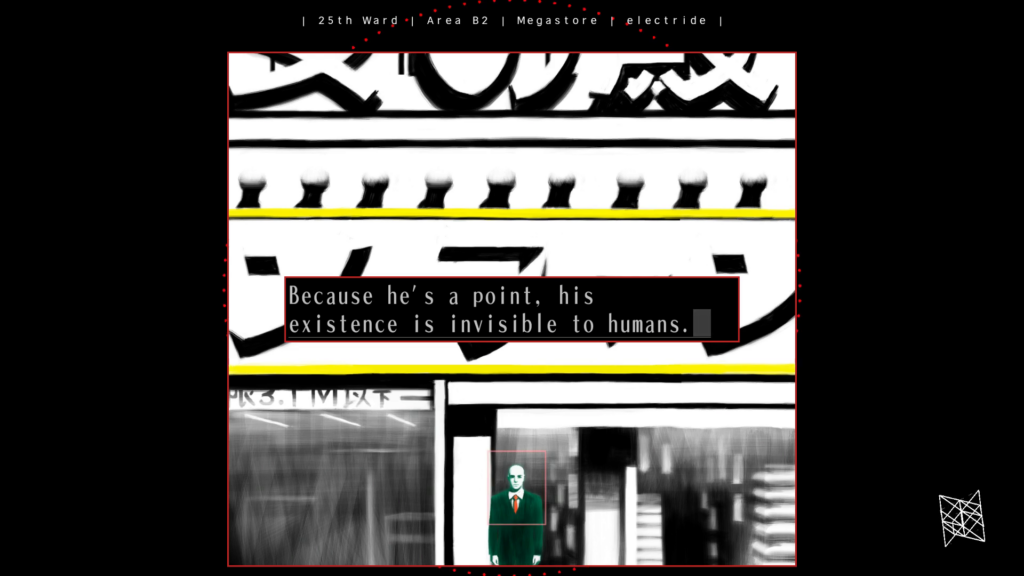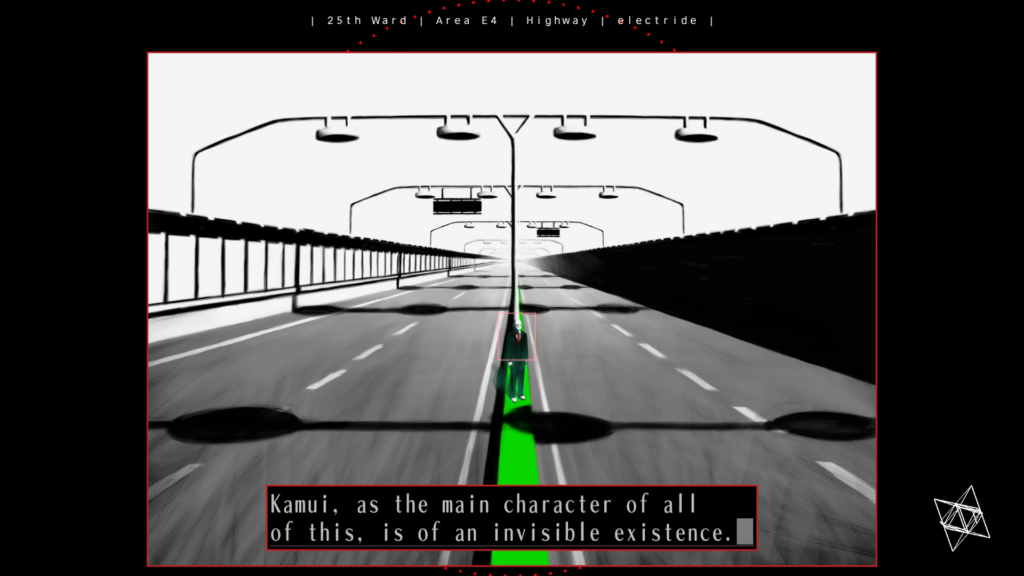
Compared to The Silver Case, The 25th Ward features a large amount of discourse on Kamui/Ayame as an abstract concept. Sakura understands Kamui as criminal power itself, the driving force of control in the city that is also going to get out of control and “end the life” as she helped Akira do in The Silver Case (and might be trying to do here as well). Munakata claims Kamui is the power that twists “facts” into “truth.” Somewhat more balanced, Meru says both that Kamui is a virus and that he is the impulse to kill people “that is neither good nor bad by nature.” Sumio states Kamui is “proliferating” as a “thought,” as in my reading of The Silver Case. Tokio believes “Kamui’s true identity” is “[n]ot an idea, nor words. It’s like a ripened fruit, simply hanging there.” This rejects the notion that Kamui is information (I have to pack up and quit, I was wrong). Instead, no longer the ultimate victim empowered to fight back in the form of information that triggers violence, Kamui is just the ultimate victim, waiting to be eaten, as Tokio is.

Shiroyabu concludes his metaphysical rambling by deciding Kamui is a point in space who lives inside a point in space. In “white out,” he has a dream in which Kamui appears as a robotic man “Like a wrestler making an appearance at Wrestlemania” whose very existence is comforting, eliminating doubt about the world. Though the vision does not seem obviously negative, at worst distracting the audience at a climate change conference after the narrator’s wife finishes her acclaimed speech, not even interrupting her. Shiroyabu devotes himself to destroying Kamui anyway.

In one reading, the player is Kamui. This is not in the sense that they play as Kamui, as in The Silver Case. The player exclusively controls other characters via the interface, which is Kurumizawa, who does all this to allow Kamui to observe the 25th Ward. Shiroyabu decides that Kamui is beside him and, to him, an invisible existence, like the player. Taking the metaphor of The Silver Case a step farther, the physical person outside the video game is the character Kamui, the alien force using the omnipresent Kurumizawa, who is part of the HUD, to observe the various storylines. Consider that in Kill the Past divinity is often represented outside the video game itself, such as when Kun Lan drops the controller at the end of “Alter Ego.” But in this case, Kamui is ineffective: he cannot alter the course of the story but only advance text and solve puzzles. “Black out” mocks the idea that he has any real influence. It is also inconsistent: no such intermediary power or character was necessary in the previous titles.
In The Silver Case, Kamui can be understood as information spreading and, metaphorically, a “crime virus” that “infects” people to defy the oppressive state, all dialectically stemming from an original act of violence against a civilian that expanded to violence against all civilians. But Correctness, Matchmaker, and Placebo all depict Kamui/Ayame as a literal virus.
No less than Meru explains Kamui in these terms: “it’s probably easiest to think that there’s a virus called Kamui that exists. When someone is infected with the Kamui virus and symptoms start to show, that person’s criminal power increases and is eventually called upon.” She also describes the way this happens to her Ayame persona in terms of a literal, physical parasite: “As the days went by, the Ayame inside me grew larger and larger. Like a tumor that develops inside your body and keeps growing and growing, Ayame kept developing while stealing my nutrients.” Given that she implies brain surgery occurred in the shelters and that Ayame does indeed cause her to physically wither and die, Kamui/Ayame might now have become body-controlling tumors like those Kun Lan creates to transform humans into his own mindless living weapons. Meanwhile, in “moon over 25,” criminal power is now so concrete that Mikoshiba gives Shigino a machine that can physically extract it from people.
***